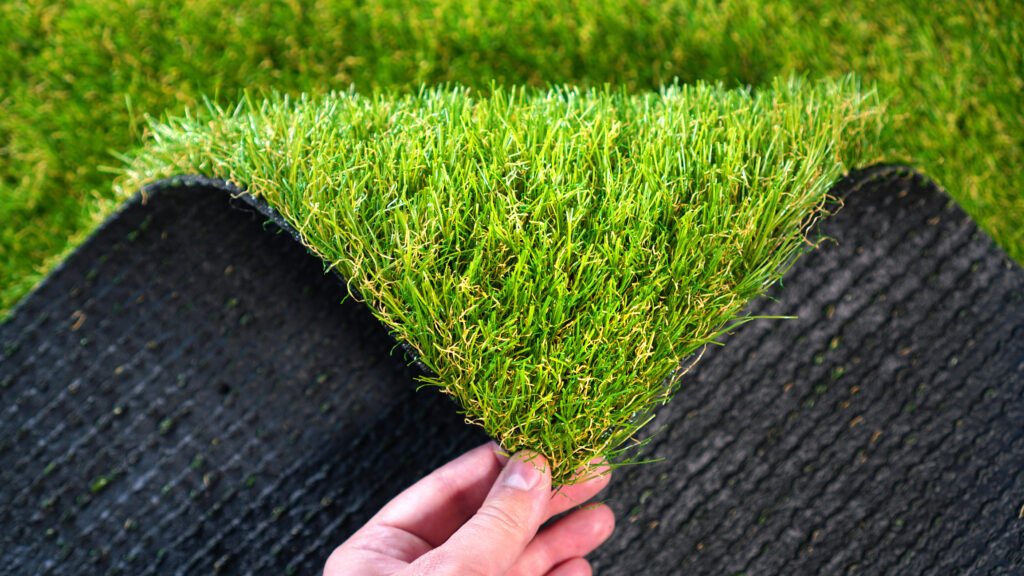The History of Artificial Turf
Artificial Turf Installation in Phoenix, AZ: The History
Artificial turf has come a long way since its debut in the 1960s. What started as a novel solution for indoor sports arenas has evolved into a high-tech, eco-friendly landscaping option for homes and businesses across Phoenix, AZ. Whether you’re researching synthetic grass for your backyard or curious about the origins of Astroturf, this guide will walk you through the fascinating history of artificial turf and how it became a staple in desert landscaping.
The Birth of Astroturf
The story of artificial turf begins in the early 1960s with a project called “ChemGrass,” developed by Monsanto. This synthetic surface was designed to provide a durable, low-maintenance alternative to natural grass, especially in environments where maintaining real turf was difficult.
In 1966, the Houston Astrodome became the first major sports venue to install ChemGrass. The product was soon rebranded as Astroturf, a name that would become synonymous with artificial turf for decades. The installation of Astroturf in the Astrodome marked a turning point in sports facility design and sparked widespread interest in synthetic grass solutions.
Artificial Turf in Sports
Throughout the 1970s and 1980s, Astroturf gained popularity in professional and collegiate sports. Its ability to withstand heavy use and eliminate the need for watering or mowing made it an attractive option for stadiums nationwide. However, early versions of Astroturf were criticized for being too hard and increasing the risk of injury.
This feedback led to innovations in turf technology. By the 1990s, manufacturers began developing third-generation synthetic grass that included longer fibers, infill materials like rubber and sand, and improved shock absorption. These advancements made artificial turf safer and more realistic, paving the way for its use beyond sports fields.
The Rise of Residential and Commercial Use
As synthetic grass technology improved, so did its appeal to homeowners and businesses—especially in arid regions like Phoenix, AZ. The installation of Astroturf and other artificial turf products became a practical solution for those looking to conserve water, reduce maintenance, and maintain a green lawn year-round.
Artificial turf installation has become increasingly popular in Phoenix, where water conservation is a top priority. Modern synthetic grass mimics the look and feel of natural grass while offering significant environmental and financial benefits. It’s now used in residential yards, commercial properties, playgrounds, pet areas, and even rooftop gardens.
Technological Advancements in Synthetic Grass
Today’s artificial turf is a far cry from the early days of Astroturf. Modern products are engineered with UV-resistant fibers, antimicrobial coatings, and advanced drainage systems. These features make synthetic grass more durable, hygienic, and comfortable underfoot. Some of the latest innovations include:
- Cooling technology to reduce surface temperatures in hot climates like Phoenix.
- Recyclable materials that support sustainability goals.
- Custom blade shapes and colors for a more natural appearance.
These advancements have made artificial turf a smart investment for homeowners and businesses alike, especially in regions where maintaining a natural lawn is costly and impractical.
Artificial Turf Installation in Phoenix, AZ
If you’re considering artificial turf installation in Phoenix, it’s important to work with our experienced professionals who understand the unique challenges of the desert climate. Proper installation ensures optimal performance, longevity, and aesthetics. The process typically includes:
- Site Preparation – removing existing grass and leveling the area.
- Base Installation – adding a compacted layer of crushed rock for drainage.
- Turf Placement – rolling out and securing the synthetic grass.
- Infill Application – spreading sand or rubber granules to support the blades and improve cushioning.
Why Artificial Turf is Here to Stay
The history of artificial turf is a testament to innovation and adaptability. From its roots in sports stadiums to its widespread use in residential and commercial landscaping, synthetic grass has proven to be more than a trend.
In Phoenix, where extreme heat and water restrictions make natural grass difficult to maintain, artificial turf provides a sustainable alternative that meets aesthetic and environmental needs. As technology continues to evolve, we can expect even more advanced and eco-conscious turf solutions in the years to come.
Contact Arizona Artificial Lawns Today!
Artificial turf has transformed from a sports field novelty into landscaping, especially in places like Phoenix, AZ. With its rich history, ongoing innovation, and practical benefits, synthetic grass is an ideal choice for anyone looking to enhance their outdoor space while conserving resources. If you’re ready to explore artificial turf installation for your home or business, contact us at Arizona Artificial Lawns to learn more about the best options for your needs.

